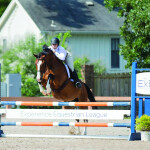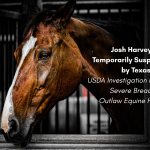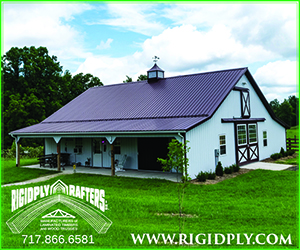The way Mid-South temperatures dip and swing can negatively lead to health problems in horses. Here are ways to help prevent colic in horses during sudden weather changes.
The ups and downs of Mid-South spring weather leave many of us feeling it: sneezing, runny nose, sore throat, and perhaps culminating with a lovely, Mid-South sinus infection. Most of us hope the weather will just hurry up and level out so we aren’t dealing with humid highs in the mid-80’s one day and dreary 50’s the next, like the weather we are experiencing this week. In the same way these temperature dips and swings affect human health, they can lead to health problems in horses as well.
Most equestrians have heard that changing weather causes colic in horses. However, it’s not the actual weather itself. The temperature and wind speed aren’t the culprits themselves, but the changes in routine, eating habits, and movement patterns these weather conditions can bring on in your horse are responsible for potentially precipitating a colic episode. Some studies even suggest barometric pressure can be a contributing factor when it comes to colic.
As most horse owners and horse caregivers know, equine colic can surprise you and your horse any time. However, in the springtime gas colic is more likely to occur due to horses grazing on lush, spring grass that is high in sugar. A buildup of gas and excessive fermentation can easily occur in the horse’s gut as it forages on spring pastures. Our indecisive spring weather combined with this risk of spring gas colic can be a recipe for disaster for your horse..
What can you do to help prevent colic when the temperature drops 30 degrees within the same 24 hour period? First, try to entice your horse to drink more water. This can be done by giving the equine electrolytes, top dressing salt on its feed, adding water to its food, or even soaking its hay. Offering warm water when the temperatures drop may be an incentive to get your horse to drink more as well. Increasing water intake helps to combat the horse’s inclination to drink less when the weather changes from warmer to colder temperatures.
Another spring colic prevention tactic when the temperatures are fluctuating is to keep your horse moving as normal. With the recent spring storms and temperature changes, your horse’s turnout time may have been affected. Lightning, strong winds, and cooler temperatures may keep your horse in the stall more in an attempt to avoid the weather. This decreased mobility and lack of exercise can also predispose your horse to colic. Be sure to keep your horse moving, as this will keep its gut moving as well. When turnout is limited, take time to hand walk your horse, find a safe spot to turn it out (such as a covered arena), or even go for a ride on safe terrain when the weather clears.
Lastly, you may not want to make any sudden changes to your horse’s diet during this seasonal time of variable weather. Quick diet changes can also precipitate colic episodes. If you plan to change your horse’s type of feed or amount, consider waiting until the temperatures stabilize and make any changes gradually, as this should minimize the risk of digestive upset.










